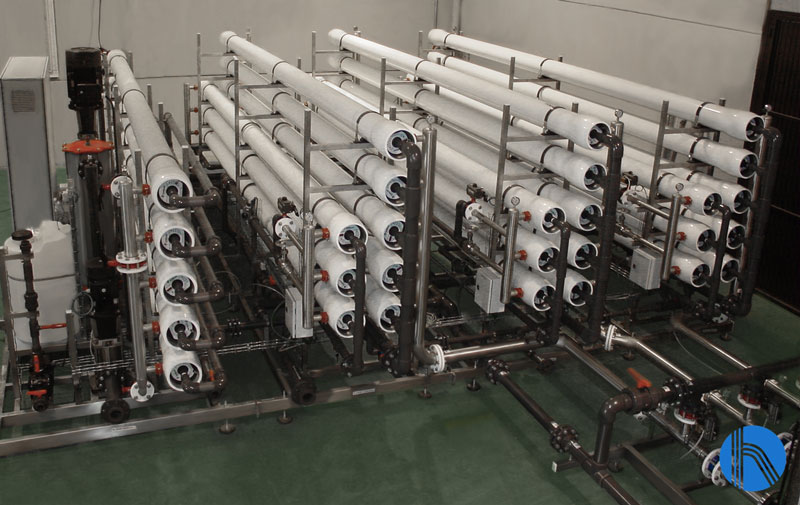Nanofiltration is a membrane filtration process that takes place in a porosity range between 150-500 Dalton, depending on the molecular structure (pore size around 1 nm), which achieves, among other things, the separation of polyvalent ions with an effectiveness of more than 95 %, as well as organic matter of low molecular weight (sugar, proteins, etc.).
There are a variety of membrane types on the market, making it possible to achieve a variety of different qualities for final product. It is worth mentioning:
Technologies
NANOFILTRATION
- Membranes with a spiral configuration: they consist of a group of membranes wound together over a tube that collects the permeate; in this case the water flows from the outside to the inside. They are more compact units and are used when high quality ultrapure water is required.
- Tubular membranes: in this case, the tube-shaped membranes are placed on a support that acts as a collector. The flow goes from the inside to the outside, and use is more widespread, due to its greater strength.
APPLICATIONS
The main uses of this technology are:
- As a pretreatment for other processes, e.g., reverse osmosis
- Industrial process feed water
- Separation of heavy metals
- Wastewater reuse
- Water softening (removes calcium, magnesium, and sulfate ions, among other things)
- Reuse of brine
ADVANTAGES
Some of the advantages of this treatment system are:
- Compact plants (they take up less space)
- Low pressure requirement









